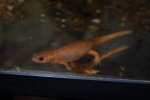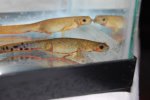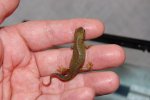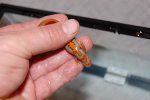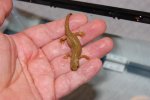joostpopei: the original description of chenggongensis lists them smaller than cyanurus. Also, I have personally had offspring with no black cloacal bars from parents assignable to yunnanensis. I have also been told by other keepers that they have gotten offspring with black cloacal bars from parents who did not not possess them. I have to think, this is a very plastic trait which can appear in just about any population of cyanurus/chenggongensis.
j2quinn: If the information contained is relevant, could you please at least summarize it for the discussion?
I would also add here that I've been told second-hand that David Wake at U.C. Berkeley has referred to cyanurus as a "taxonomic dumping ground". I think the reality is there are probably 3 to 4+ species of extant newts from China with orange dots behind the eyes. But to add to the confusion, the color patterns of these species are highly variable. So I'd bet many of us are thinking we have two different species when in reality, we simply have pattern/size/population variants of only one or two.
Just consider the differences in size/shape/proportions of the various N.v. viridescens subspecies, and their differences in efts (or lack thereof). If those animals were coming out of China with unknown locality data, we'd all be convinced we had 3 or 4 different species.
 It could be you doing it eljorgo!
It could be you doing it eljorgo! 


